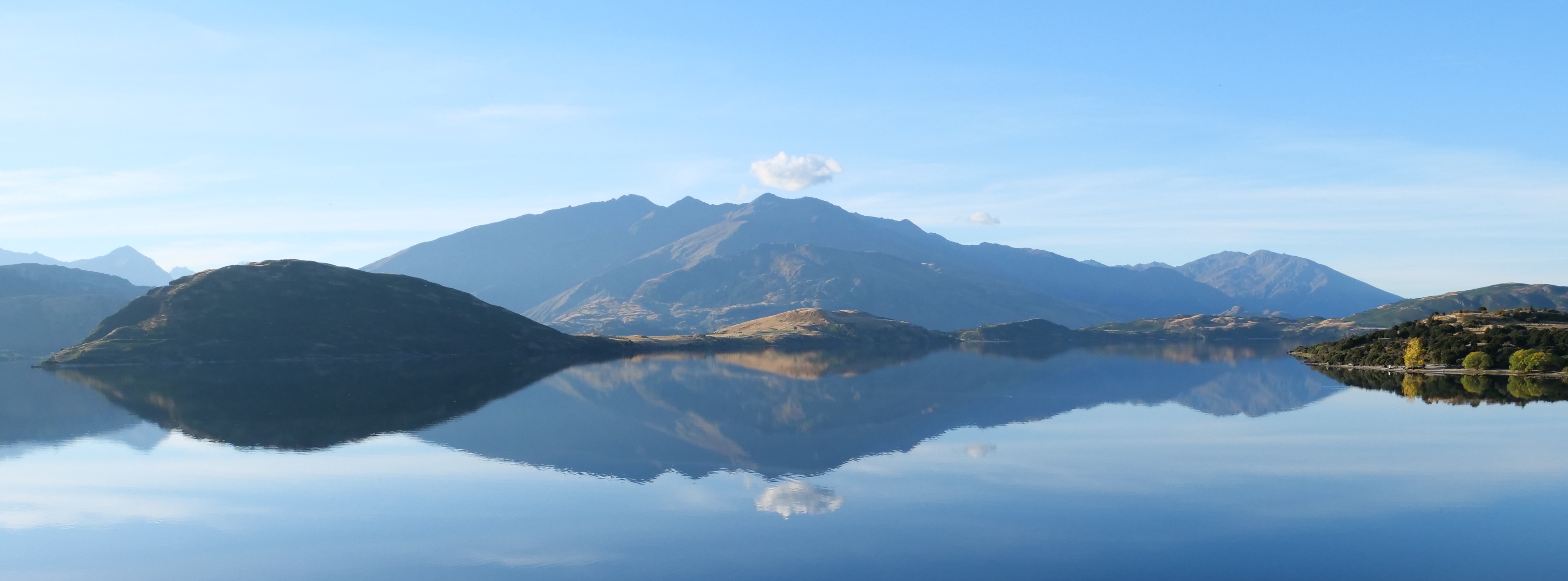New Zealand’s South Island has a number of large, deep, glacier-carved lakes.
Each is jaw-droppingly beautiful…but all are far from pristine.
Only long after ancient Rome’s “fall” did Aotearoa/New Zealand first “enjoy” human presence; available evidence suggests that Maori settlement began a little less than 750 years ago.
Lake Wanaka‘s serrated horizon would then have been much the same as it is in this post’s featured image.
However, its first humans saw great forests that no longer flourish; their ears heard many birds who no longer sing.
Within just a few human generations, the Maori hunted to extinction the Moa; flightless, and fearless of all other flightless beings, the Moa were the tallest birds ever known to have walked on Earth.
Their one predator was the largest eagle ever to have flown; Haast’s Eagle’s extinction was a rapid consequence of the Moa’s.
The Maori introduced rodents and dogs to a land on which no mammals’ feet had walked; its only non-marine mammals – bats – were much more nimble flyers than many of the native birds. (predatory mammals’ absence made flying skills non-essential to birds’ survivability)
And, of course, much worse was to come…
European settlers (as distinct from the earlier-arriving “European visitors” – explorers, whalers and sealers) arrived, just over two centuries ago.
They introduced sheep, cattle, assorted deer, possums, rabbits, and – most devastating of all – the stoats, which arrived from 1879, in an unsuccessful attempt to “control” rabbits and “help” sheep.
European settlers also destroyed most of NZ’s utterly singular forests, severely degraded most rivers, lost billions of tonnes of topsoil, and established a rich assortment of inappropriate and invasive plants. (argubably, of NZ’s photosynthesising “ferals”, the most devastating is pinus radiata)
In terms of extinction rates – and currently-critically endangered species numbers – NZ (like Australia) is firmly entrenched in the world’s Top 10.
All this notwithstanding, NZ (like Australia – although the two countries’ landscapes, flora and fauna are remarkably unlike) is a singular land, abundant in natural wonders.
This trilogy’s second and third chapters will introduce you to some of Mou Waho’s fauna, and explain why this particular island has become crucial to some species’ survival prospects.
As detailed here, Lake Wanaka has four significant islands.
The one prominent in the image atop this post is Mou Tapu. I took that photo at 7.03 pm on March 20, 2019. All photos copyright Doug Spencer; the following images were taken the next morning, on Mou Waho.
Ecologically speaking, Mou Waho is much the “healthiest” of Lake Wanaka’s islands.
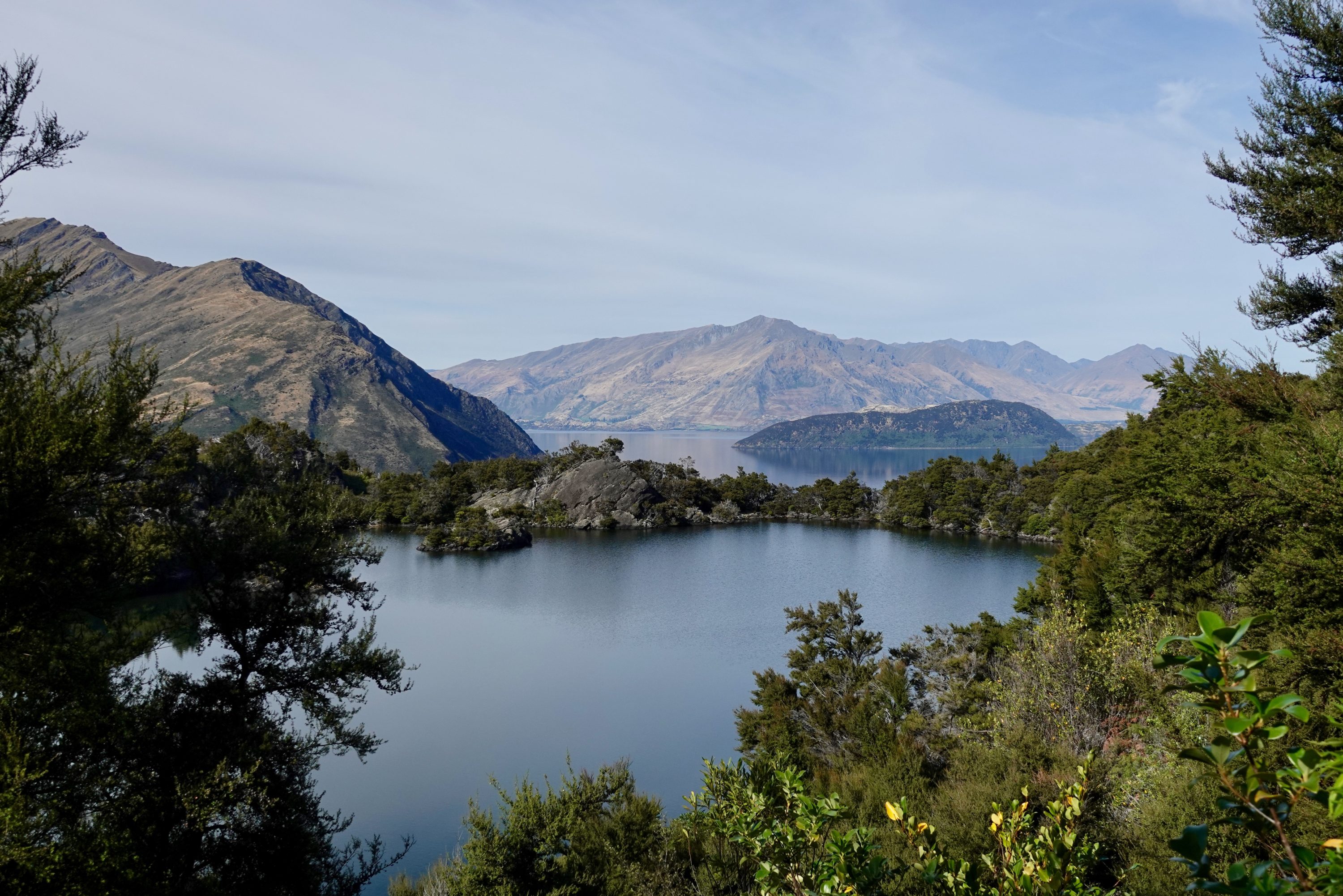
Mou Waho’s signature “landscape feature” is Arethusa Pool – a perched, petite, almost unimaginably exquisite, glacier-scoured lake.
If you look carefully, below, you can see the one person who that morning braved its bracing waters!
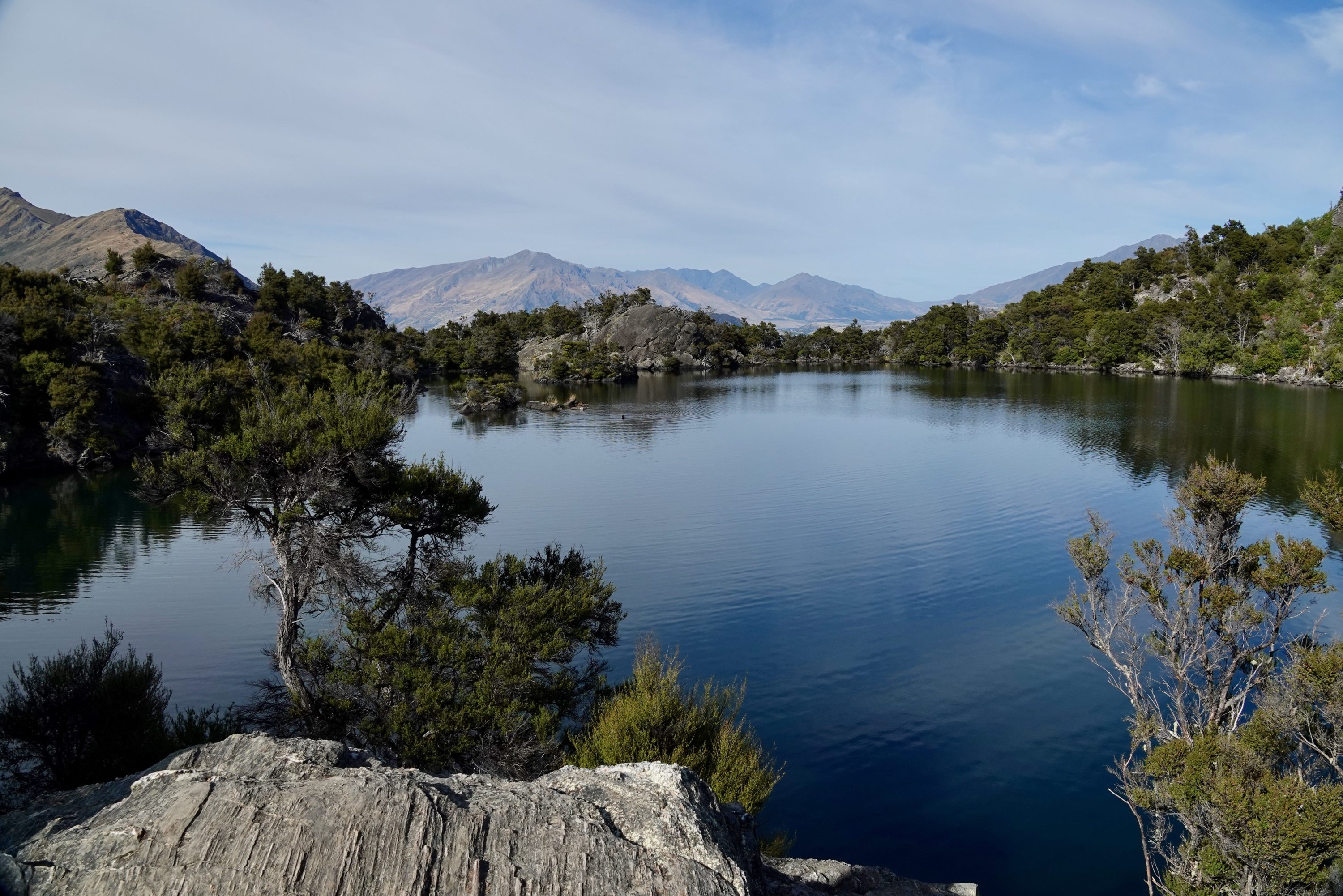
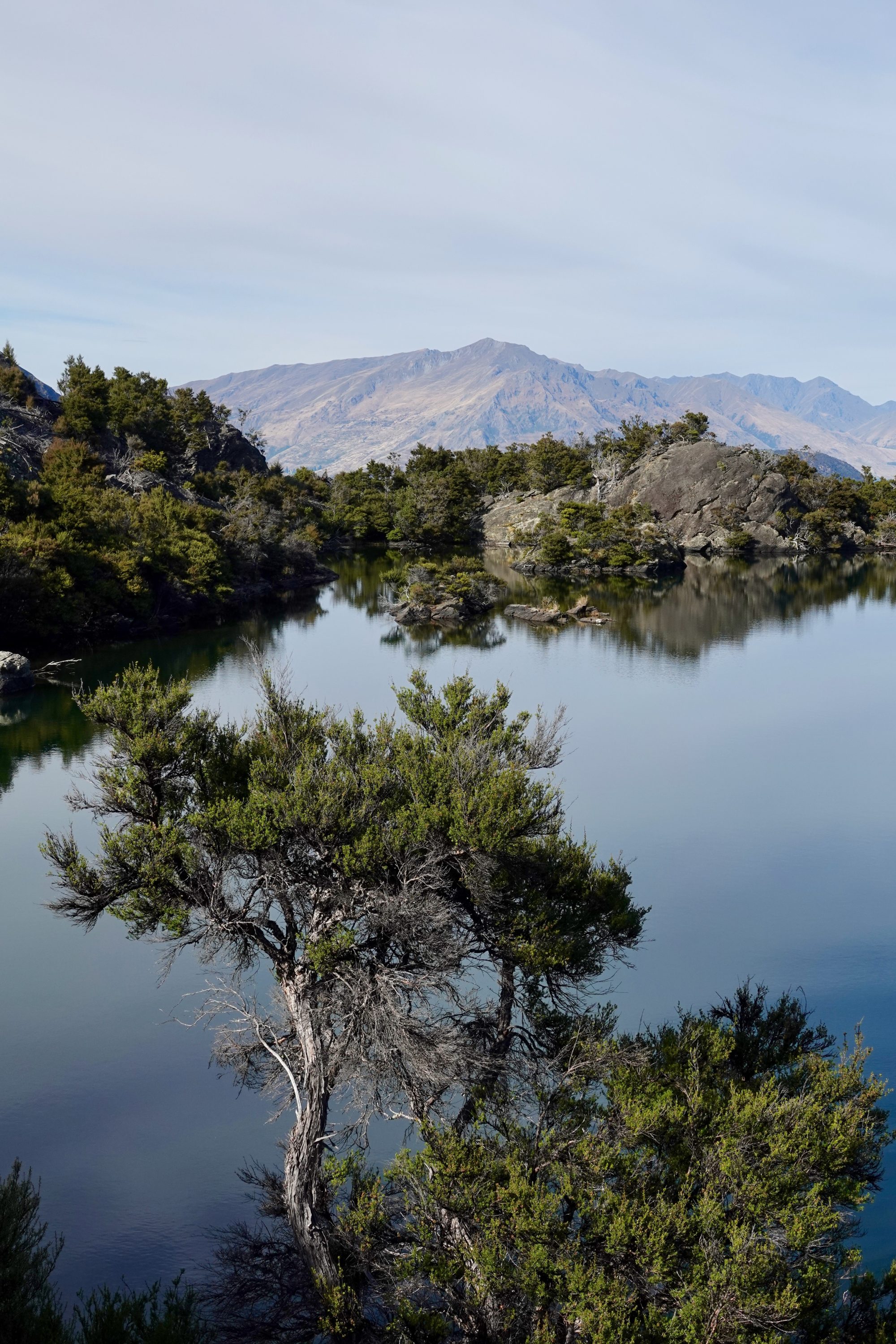
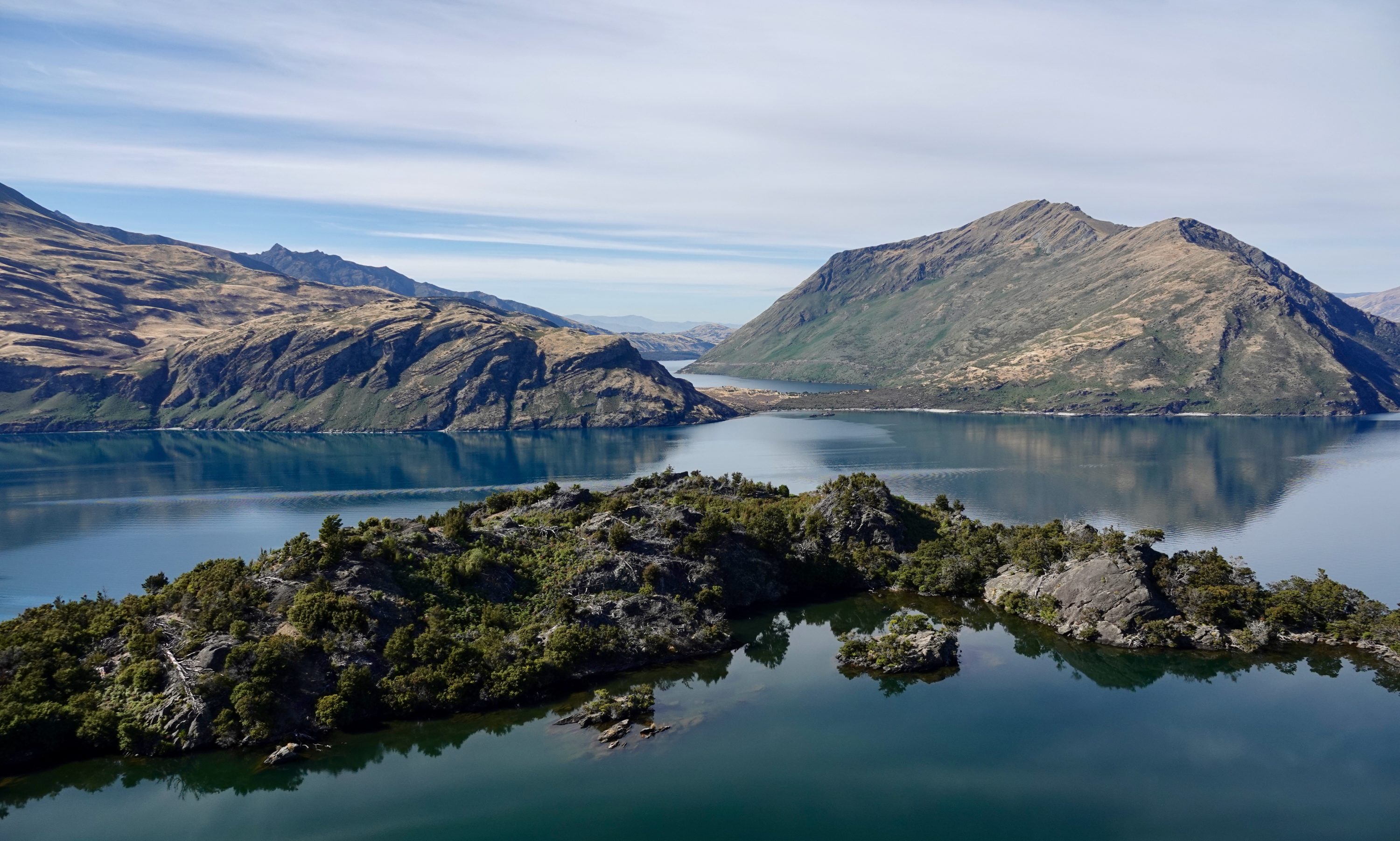
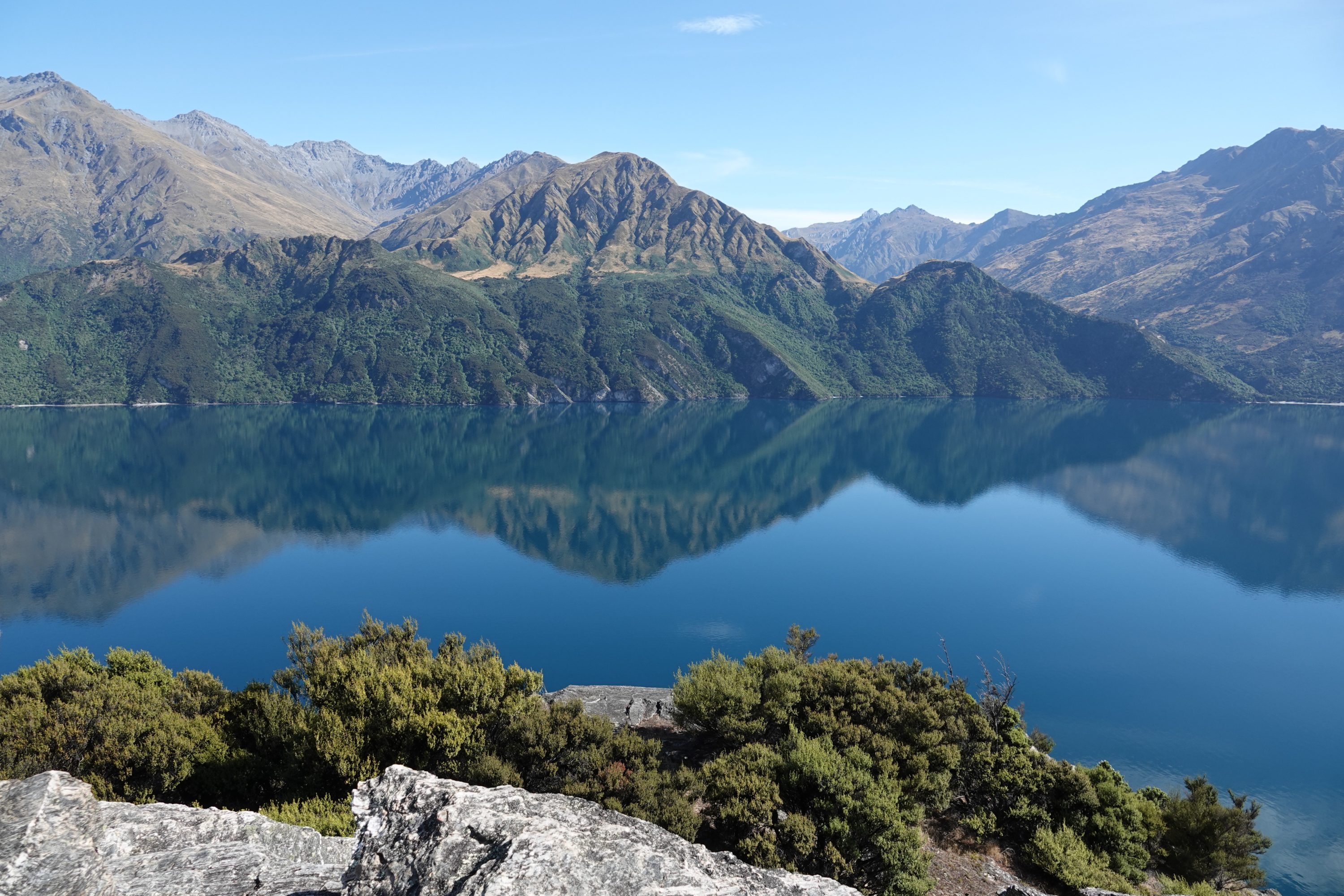
As their clearly-defined “snowlines/treelines” would suggest, the mountains which fringe Lake Wanaka are white-capped for a deal of each year.
After a long, dry summer, March 21 was an unusually still, warm day. 2019’s snows had not yet begun to fall.
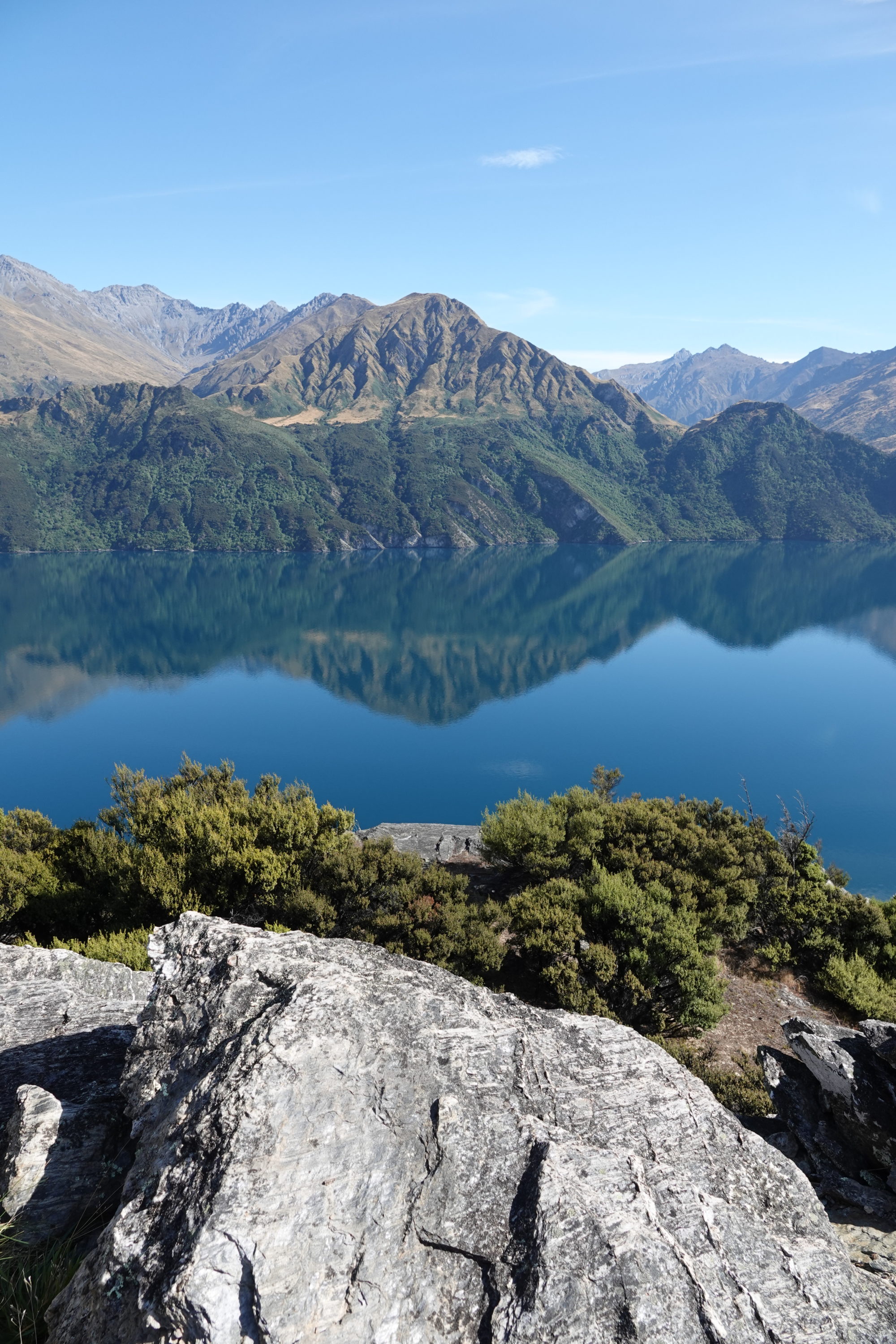
The next post’s star is a very curious bird…
